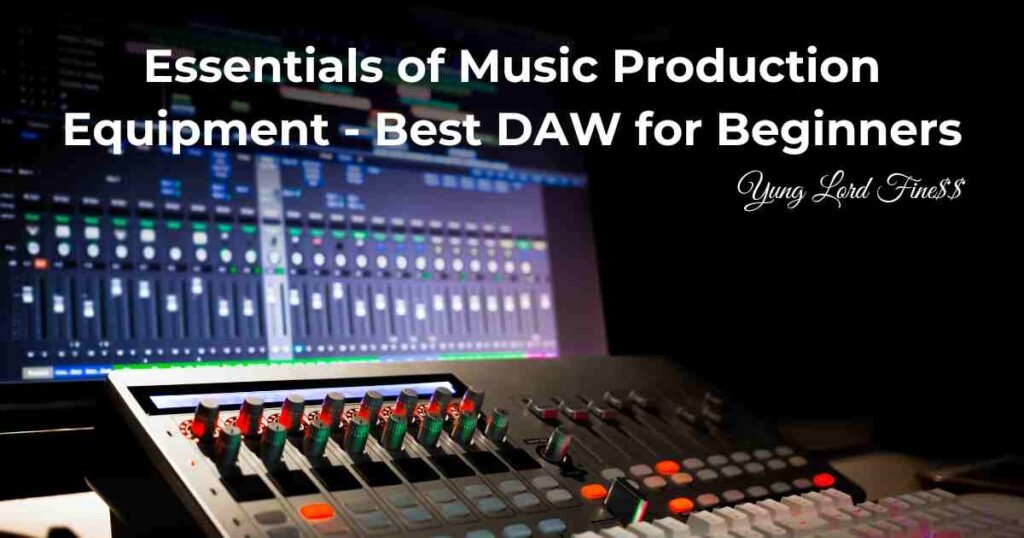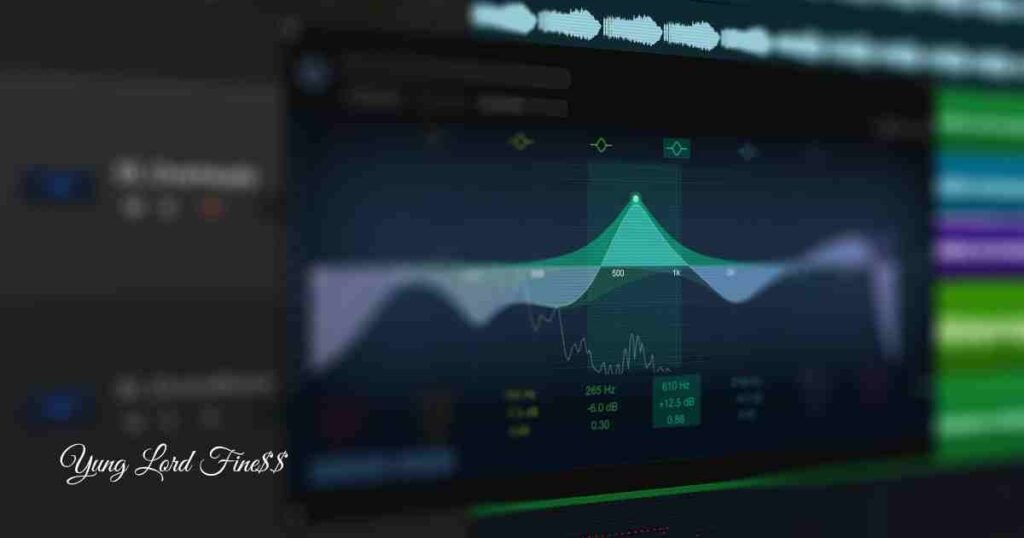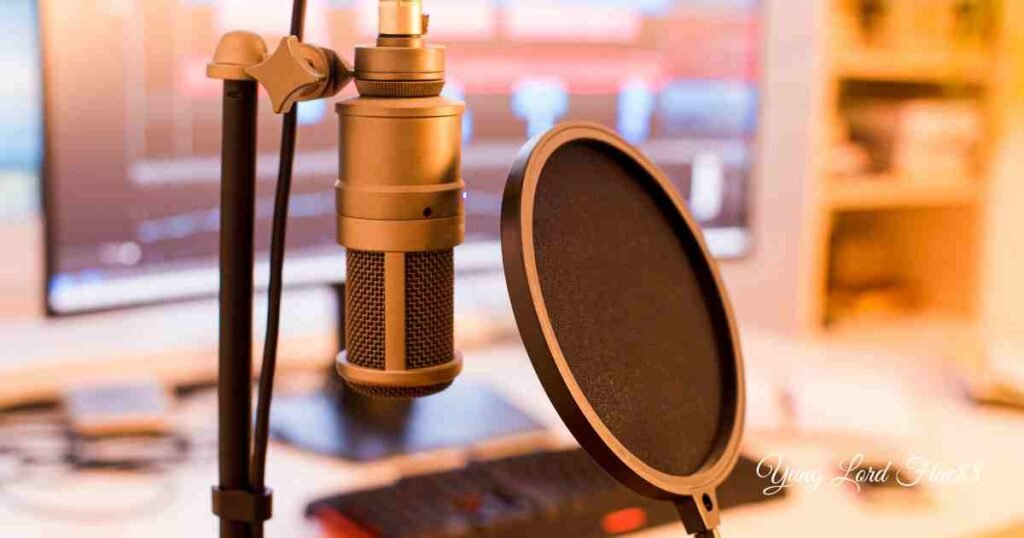Receiptify and Spotify receipts have revolutionized the way we engage with music, offering innovative tools that provide valuable insights into listener habits and enhance artist engagement. Receiptify generates a “receipt” of your top Spotify tracks, summarizing your most-listened-to songs over a specified period. This unique reflection on musical preferences creates a sense of nostalgia and deeper connection with favorite tracks. Sharing these receipts on social media has become a cultural phenomenon, fostering community among music enthusiasts and promoting artists organically through user-generated content. For artists, the data from Receiptify is invaluable for understanding audience engagement and tailoring marketing strategies. As technology continues to evolve, tools like Receiptify will play an increasingly important role in shaping the future of music consumption and engagement.
Essentials of Music Production Equipment - Best DAW for Beginners

In the dynamic world of music production, the tools and technology at your disposal can significantly influence the quality and character of your creations. For emerging artists and producers, navigating the vast ocean of “music producing equipment” and “music production equipment” can be both exhilarating and daunting. As Yung Lord Fine$$, my journey into the music industry has been a testament to the transformative power of having the right equipment by your side. Whether it’s crafting a beat, laying down vocals, or mixing tracks, the equipment you use is the backbone of your creative process.
The Foundation of Music Production
At the heart of any music production setup is the choice of equipment. This doesn’t merely pertain to the most advanced or expensive gear but rather the right tools that complement your style, workflow, and the musical genres you’re delving into. From the aspiring artist working in their bedroom studio to the seasoned producer in a professional recording facility, the essence of creating music remains the same—it’s about expressing emotion, telling a story, and connecting with your audience. Hence, selecting “music production equipment” isn’t just a matter of technical necessity; it’s a crucial step in shaping the sound and soul of your music.
Navigating the World of Music Production Equipment
For those just embarking on their music production journey, the array of available equipment might seem overwhelming. From digital audio workstations (DAWs) to microphones, synthesizers, and audio interfaces, each piece of equipment plays a distinct role in the production process. The key is to start with the essentials—equipment that’s versatile, user-friendly, and capable of producing high-quality sound. This foundation will not only support your initial projects but also grow with you as you refine your skills and artistic vision.
In this blog, we’ll dive deep into the world of “music producing equipment” and “music production equipment,” highlighting the must-have tools for beginners and seasoned producers alike. We’ll explore everything from the “best DAW for beginners” to finding the “easiest DAW to use,” ensuring you’re well-equipped to bring your musical ideas to life. With insights from my own experiences and a focus on accessibility and quality, this guide aims to demystify the process of setting up your first studio, choosing the right equipment, and starting your journey in music production on the right note. Listen to Yung Lord Fine$$ hit “Thinking of You“

The Heart of Your Studio: Choosing the Right DAW
The Quest for the Best DAW for Beginners
When you’re starting in the world of music production, the digital audio workstation (DAW) you choose becomes your main tool for recording, editing, mixing, and arranging music. It’s crucial, therefore, to select a DAW that not only fits your current skills but also supports your growth as a producer. The “best DAW for beginners” is one that offers a balance between comprehensive features and an intuitive interface, allowing you to focus on creativity rather than getting bogged down by complexity.
Several DAWs stand out for beginners due to their user-friendly interfaces, robust tutorial resources, and vibrant communities that can help navigate the early stages of music production. Software like Ableton Live, FL Studio, and GarageBand has been celebrated for their approachability and depth, catering to various musical genres and production styles. Each has its strengths: GarageBand is known for its straightforward design and is free for Mac users, making it a great starting point. FL Studio shines with its pattern-based sequencing, making it ideal for electronic music and beat-making. Ableton Live is praised for its seamless live performance features and a flexible workflow that accommodates both beginners and professionals.
Finding the Easiest DAW to Use
Ease of use is subjective and can vary based on personal preferences and the specific demands of your music projects. However, some DAWs consistently receive accolades for their user-friendly nature. Logic Pro X, for example, is often lauded for its logical layout and comprehensive suite of virtual instruments and effects, making it a favorite among beginners and seasoned producers alike. It takes the foundational ease of GarageBand and elevates it with advanced features and functionalities.
For Windows users, PreSonus Studio One could be the answer to the “easiest DAW to use.” Its drag-and-drop interface simplifies the music creation process, and its single-window workspace eliminates the need to constantly switch between different screens. Studio One also offers a free version, Studio One Prime, providing a risk-free way for beginners to get acquainted with its features. Check out the results of best Music production equipment in Yung Lord Fine$$ Songs.
Your Musical Journey, Your DAW
Ultimately, the best DAW for you is the one that feels right for your workflow, genre, and level of expertise. Many DAWs offer free trials, which I highly recommend taking advantage of. Experiment with different software to see which one resonates with your creative process. Remember, the goal is to find a DAW that allows you to translate your musical ideas into reality efficiently and enjoyably.
As you become more familiar with your chosen DAW, you’ll discover that the software is just the beginning. The true magic lies in how you use it to express your unique artistic vision. With the right DAW by your side, you’ll be well on your way to crafting the sounds you’ve always dreamed of.
Building upon our exploration of the best DAWs for beginners and the easiest DAWs to use, we now transition to the broader landscape of “music production tools” essential for any aspiring producer. This final section of our blog aims to equip you with knowledge about the additional tools that complement your DAW, enhancing your music production capabilities and ensuring a smooth, creative process from start to finish.

Expanding Your Toolkit: Essential Music Production Tools for Beginners
While your digital audio workstation (DAW) serves as the heart of your music production setup, various other tools play crucial roles in bringing your musical vision to life. Understanding these “music production tools” is key to developing a versatile and efficient workflow. Read More about Crafting Music Press Kit: Essentials of Music Press Release
Audio Interfaces: Your Gateway to High-Quality Sound
One of the first investments after choosing a “DAW for beginners” should be a reliable audio interface. This device acts as the bridge between your computer and audio sources like microphones and instruments, converting analog signals into digital data that your DAW can process. A good audio interface not only ensures high-quality recordings but also reduces latency, making real-time recording and monitoring a breeze. Brands like Focusrite and PreSonus offer excellent options for beginners, balancing quality, ease of use, and affordability.
Studio Monitors and Headphones: Critical Listening Tools
Accurate monitoring is crucial for making informed decisions about your mixes. Studio monitors designed for music production offer a flat frequency response, providing a true representation of your sound without the coloration commonly found in consumer speakers. Similarly, a good pair of studio headphones is indispensable for detailed editing and mixing, especially in environments where using monitors might not be feasible. Look for headphones with a flat response and comfortable fit for long sessions.
Microphones: Capturing the Essence
Your choice of microphone can dramatically affect the quality of your recordings. For beginners, a versatile large-diaphragm condenser microphone is a great starting point, capable of capturing vocals and a wide range of instruments with clarity and detail. USB microphones also offer a convenient and cost-effective solution, with built-in audio interfaces for direct connection to your computer.
MIDI Controllers: Bridging the Gap Between Software and Creativity
A MIDI controller, whether a keyboard, drum pads, or a hybrid device, becomes an extension of your creativity, allowing you to play and record virtual instruments in your DAW intuitively. These controllers do not generate sound on their own but send MIDI data to your DAW, triggering sounds in your software instruments. They often come with additional controls like knobs and faders for manipulating sounds and effects in real-time, offering a tactile dimension to your music production experience.
Software Instruments and Effects: Expanding Your Sonic Palette
Most DAWs come with a range of built-in virtual instruments and effects, but the world of third-party plugins offers an endless array of sounds and processing options. From realistic instrument emulations to creative sound design tools, these plugins can inspire new ideas and elevate your productions. Start with free or budget-friendly options to explore different sounds and effects before investing in more specialized software.
Music Production Equipment for Beginners: Essential Accessories
In addition to the core equipment, there are a few accessories and extras that can improve your music production setup:
- Pop Filter: Helps reduce plosive sounds during vocal recording, improving the clarity of your recordings.
- Mic Stand: Essential for positioning your microphone properly during recording sessions.
- Isolation Pads: Place these under your studio monitors to reduce vibrations and improve sound clarity.
- Cable Management: Keep your workspace organized and free from tangled cables with cable organizers.
Equipment for Making Music: Enhancing Your Studio
As you progress in your music production journey, you may want to explore additional equipment and accessories to enhance your studio setup:
1. Acoustic Treatment
Acoustic treatment involves adding panels, bass traps, and diffusers to your recording space to improve sound quality and reduce unwanted reflections and reverberations. Proper acoustic treatment can significantly improve the accuracy of your mixes and make your studio a more effective workspace.
2. External Hardware
Some producers choose to incorporate external hardware like synthesizers, drum machines, and effects processors into their setup. While not essential for beginners, these tools can add a unique character to your music and provide hands-on control over your sound.
3. Portable Recording Gear
For those who want to capture ideas on the go or record in different locations, portable recording gear such as handheld recorders and compact audio interfaces can be valuable additions to your setup.
Best DAW for a Beginner: Making the Right Choice
Selecting the best DAW for a beginner involves considering factors like ease of use, available features, and personal preferences. Here’s a recap of some top choices:
GarageBand: Ideal for Mac users, GarageBand is user-friendly and comes with a range of built-in sounds and instruments. It’s a great starting point for beginners before transitioning to more advanced DAWs like Logic Pro X.
FL Studio: Known for its pattern-based sequencing, FL Studio is excellent for electronic music and beat-making. Its intuitive interface and comprehensive features make it a popular choice among beginners.
Ableton Live: With its flexible workflow and seamless integration for live performance, Ableton Live is suitable for both beginners and professionals. Its Session View allows for creative experimentation and real-time recording.
PreSonus Studio One: With its drag-and-drop functionality and single-window workspace, Studio One offers a straightforward approach to music production. The free version, Studio One Prime, provides a risk-free way to explore its features.
Integration and Workflow: Making It All Work Together
The key to a successful music production setup is not just the individual pieces of equipment but how they integrate to support your workflow. Take the time to learn the ins and outs of your tools, customizing settings and layouts to match your process. Remember, the goal is to create an environment where technology serves creativity, not the other way around.
Conclusion: Embarking on Your Music Production Journey
As we wrap up our exploration of “DAW for beginners” and essential “music production tools,” remember that the journey of music production is one of continuous learning and exploration. Your tools are your allies in this creative journey, enabling you to translate your inner musical visions into tangible works of art that can resonate with listeners around the world.
Yung Lord Fine$$’s blog is committed to supporting you through this journey, providing insights, tips, and inspiration to help you grow as a musician and producer. Whether you’re laying down your first beat, recording your debut album, or fine-tuning a mix, the right combination of tools and knowledge is your key to unlocking new heights of creative expression.
Embrace the adventure ahead, and let the music you create today be the foundation for the sonic explorations of tomorrow. With passion, perseverance, and the right tools in your arsenal, there’s no limit to the musical landscapes you can explore. Read More about “What is an EPK and Its Importance to Artists“

Frequently Asked Questions (FAQ)
Q: What is the best music production equipment for beginners?
A: The best music production equipment for beginners typically includes a user-friendly digital audio workstation (DAW), a reliable audio interface, a quality pair of studio monitors or headphones, a versatile microphone, and a MIDI controller. Starting with essential, easy-to-use equipment allows beginners to focus on learning and creativity.
Q: How do I choose the best DAW for beginners?
A: Choosing the best DAW for beginners involves considering factors like ease of use, available learning resources, and the specific features you need for your style of music production. Popular DAWs for beginners include GarageBand for Mac users, FL Studio, and Ableton Live, known for their intuitive interfaces and comprehensive tutorials.
Q: What makes a DAW easy to use?
A: An easy-to-use DAW typically offers a straightforward, intuitive interface, clear workflow, and robust support resources like tutorials and community forums. It should allow beginners to quickly start creating music without overwhelming them with complex features.
Q: Can you recommend any music production tools for beginners?
A: Besides a beginner-friendly DAW, essential music production tools include audio interfaces for connecting microphones and instruments to your computer, studio monitors or headphones for accurate sound reproduction, and MIDI controllers for playing virtual instruments. Software plugins for additional instruments and effects can also expand your creative palette.
Q: What is essential music production equipment for setting up a home studio?
A: Essential music production equipment for a home studio includes a computer with sufficient processing power, a DAW, an audio interface, studio monitors or headphones, microphones (starting with a large-diaphragm condenser microphone is a good idea), and MIDI controllers for inputting musical notes and controlling software parameters.
Q: How do I get started with music production as a beginner?
A: To get started with music production, begin by selecting a DAW that feels intuitive to you, preferably one with a strong beginner support system. Invest in essential music production equipment, and spend time learning the basics of your DAW and recording techniques. Practice regularly, start with simple projects to build your confidence, and gradually explore more complex production methods.
Share This Post
Receiptify and Spotify receipts have revolutionized the way we engage with music, offering innovative tools that provide valuable insights into listener habits and enhance artist engagement. Receiptify generates a “receipt” of your top Spotify tracks, summarizing your most-listened-to songs over a specified period. This unique reflection on musical preferences creates a sense of nostalgia and deeper connection with favorite tracks. Sharing these receipts on social media has become a cultural phenomenon, fostering community among music enthusiasts and promoting artists organically through user-generated content. For artists, the data from Receiptify is invaluable for understanding audience engagement and tailoring marketing strategies. As technology continues to evolve, tools like Receiptify will play an increasingly important role in shaping the future of music consumption and engagement.
Explore how Spotify Wrapped 2023, Spotify Pie, Spotify DNA, and other digital tools are transforming the music industry. Discover how artists leverage these insights for better audience engagement and financial management.
Understand the intricacies of the Spotify business model and learn how to optimize your Spotify artist profile to boost your music career effectively. Discover how popular singers today are leveraging their Spotify artist page to engage with fans and grow their audience significantly. Learn the essential steps on how to become an artist on Spotify and utilize the powerful features of the Spotify panel to manage and enhance your music career.
Understand the intricacies of the Spotify business model and learn how to optimize your Spotify artist profile to boost your music career effectively. Discover how popular singers today are leveraging their Spotify artist page to engage with fans and grow their audience significantly. Learn the essential steps on how to become an artist on Spotify and utilize the powerful features of the Spotify panel to manage and enhance your music career.